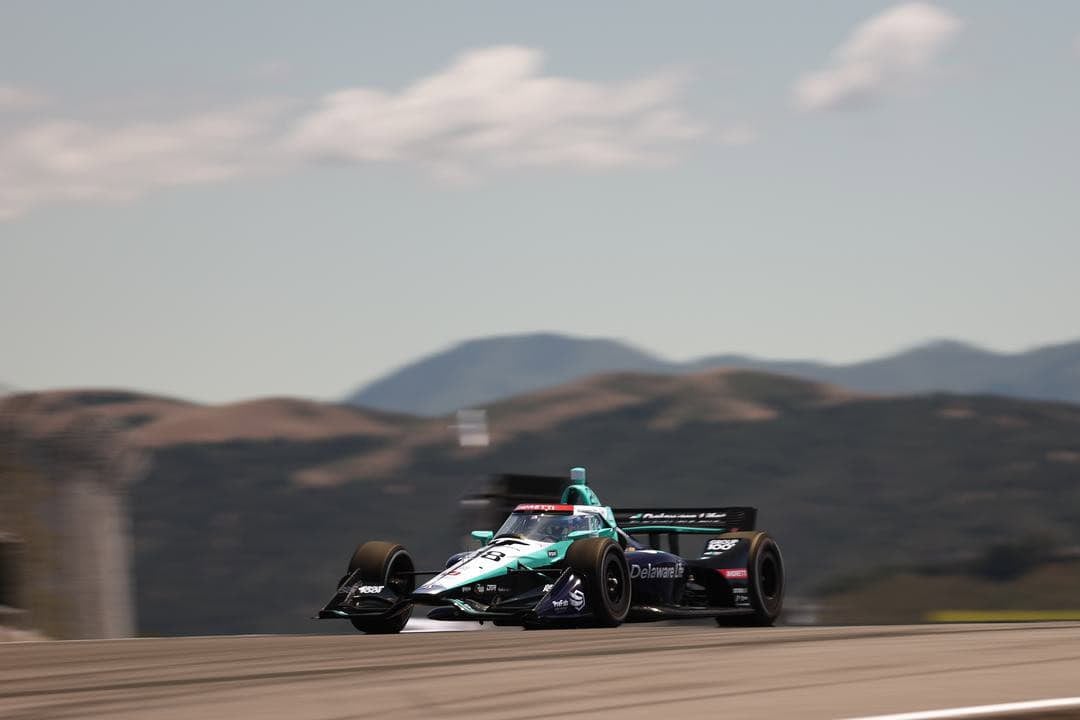IndyCar’s new hybrid era is supposed to be a leap forward — not just in technology, but in how races are managed. The hybrid units give drivers the chance to restart their stalled cars on their own, which theoretically allows race control to be more measured with yellow flags. That’s great, in principle. But what happened to Marcus Ericsson at Laguna Seca on Sunday (July 27) shows just how badly this approach can backfire when common sense leaves the room.
Late in the race, with just under 20 laps to go, Ericsson spun exiting turn 7 and ended up stranded high-centered on a curb and completely stalled. Worse yet, he was stuck in one of the most dangerous parts of the track: a blind crest where oncoming drivers had almost no time to react.
His car sat there, completely exposed, for over 90 seconds, while the broadcast team aired replays and openly questioned what race control was waiting for. Local yellows were displayed, sure, but that wasn’t nearly enough.
The problem isn’t just that they delayed the full-course caution. It’s why they delayed it. IndyCar has a growing habit of waiting to throw cautions so as not to interfere with green-flag pit strategies. Earlier in the same race, they left Rinus VeeKay stranded in the gravel trap to allow pit stops to cycle through. That was already pushing it.
But this? Leaving a car in the racing line for over 90 seconds in a blind spot? That’s not just questionable; it’s reckless.
Let’s be clear: giving a driver 5 to 10 seconds to restart their car is totally reasonable. That’s part of the point of the hybrid system and most fans are fine with that. But once it became clear that Ericsson wasn’t going anywhere, and it was obvious almost immediately, race control had a responsibility to throw the yellow. Instead, they waited.
And waited.
And waited.
Eventually, the caution came, but only after any possibility of Ericsson continuing his race had evaporated. He was forced to retire, his day undone not just by the spin but by the slow response that followed. While that’s frustrating from a competitive standpoint, the bigger issue is safety.
What would’ve happened if another driver came flying over the hill and clipped Ericsson’s stalled car? That’s not just hypothetical. We’ve seen far too many real-life examples across motorsport where delayed reactions have led to serious injuries or worse.
Race control’s job isn’t just to protect the integrity of the event. It’s to protect the drivers.
If preserving a pit cycle or a few more green-flag laps takes precedence over that, then the system is broken. The delay at Laguna Seca wasn’t a technical glitch or a judgment call that could’ve gone either way. It was a glaring failure to act on a clear and present danger, and the fact that it happened in the closing laps of a race with eyes on the title fight makes it all the more indefensible.
This should be a turning point. IndyCar cannot keep playing with fire in the name of race flow. Yes, fans want fewer interruptions, and yes, pit strategies add intrigue. But no one wants to watch a driver get hurt because race control gambled and lost.
If this hybrid era is going to work, it has to be paired with better instincts and faster decisions from those in charge.



